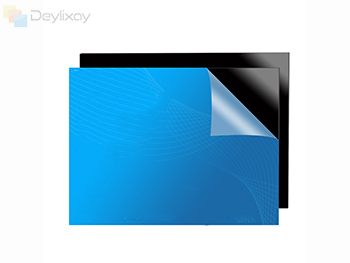Amaphepha ePolycarbonate (PC) anoguquko kwimizi-mveliso emininzi ngokukodwa ukudityaniswa kwamandla, ukucaciswa, kunye nokuqalisa. Njengomnye wezinto ezibonakalayo ezibonakalayo namhlanje, iimakhishithi zePC zibonelela izibonelelo ezizodwa ezenza ukuba babe nakho kumasimi asusela kwimveliso yokwakha. Esi sikhokelo sibanzi siphonononga izicelo ezahlukeneyo kunye nezibonelelo zamaphepha ePolycarbontete kuwo onke amashishini aqatha.

Ukuqonda amaphepha ePolycarbontete
Iipropathi zezinto ezibonakalayo
Amaphepha ePolycarbonate awaziwa ii-thermorics ze-thermostics zalo:
Ukunganyangeki kwempembelelo ekhethekileyo (amaxesha angama-250 eyomeleleyo kuneglasi)
Ukuhanjiswa okuphezulu kokukhanya (ukuya kuthi ga kwi-90%)
IiPropathi zeTranslates ezilungileyo
I-Flamenti yePlass yeDlame (il94 v-0 / v-2 i-v-2)
I-UV Ukuchasana nokudibana okufanelekileyo
Iimpawu ezilula (isiqingatha sobunzima beglasi)
Imveliso eyahlukileyo
Iphepha eliqinileyo: Udonga oluninzi kunye nolu lungiselelo lodonga olunye
Iipaneli ezihloliweyo: ukuba uphahla kunye nezicelo zomhlaba
Ukutyibilika okubonakalayo: Ukuhombisa kunye nokukhetha okungagungqiyo
Amabakala azodwa: Anti-Static, i-anti-foug, kunye nee-bultings ezinganyangekiyo
Izicelo zeshishini lokwakha
Indawo yokwakha
Iinkqubo zeSkykys: Idome kunye nokufakelwa kwepaneli
Ikhuselo lodonga: Imvulophu efanelekileyo yokwakha amandla
I-canopy igubungela: ukukhuselwa kokungena kunye neziPhuculo zobuhle
Ukuvalwa kweWewaw
Izisombululo ezihlaselayo
Uphahla lwemizi-mveliso: umzi-mveliso kunye ne-Wareuse Izicelo zokugcina iimpahla
Ukugubungela iGreenhouse: Ukukhanya okuqinisekileyo kokukhula kwezityalo
Uphahla lwebala lemidlalo
I-Piates evalelweyo: Iindawo ezine-soun
Izicelo zangaphakathi
Izithintelo zoKhuseleko: Izihluzo ezinganyangekiyo kunye nogada
Izithintelo zesandi: Iinkqubo ze-acoustic
Iipaneli zokuhombisa: Ukuvalwa kweWall kunye nezinto zoyilo
Izikhululo zeWindows: Izikhululo zeBhanki Tebhu kunye neendawo zokwamkela
Iimpawu zokwakha ezikhethekileyo
Ukukhuselwa okunganyangekiyo
Ukuhlaselwa kukunciphisa: Iindawo zokwakha ezinganyangekiyo
I-Fireyity elinganiswe ngumlilo: Izithintelo eziqinisekisiweyo zomlilo
Ukukhusela isaqhwithi: IiNkqubo zeFayile ezinganyangekiyo
Izicelo zeshishini le-Automotive
Izinto ezingaphandle
Iilensi zentloko
Iipaneli zelanga: Uphahla olubonakalayo olukhanyayo
Ii-Windshiels Gights: Iiglasi zeNtloko zeNtlalo
Iipaneli zomzimba: Ukutshintshwa kokukhanya kwamalungu entsimbi
Izicelo zangaphakathi
Iiphaneli zesixhobo: Amacandelo edashboard yedashboard
Ifestile ye-Window: icala kunye nezicelo zangasemva
Ukukhanyisa izibane: isibane sangaphakathi kunye nokubonisa ukhuseleko
Ukuhlobisa i-Trim: Izinto ezingasentla ze-aesthetic
I-Eccial Special SIRRISS
Izithuthi ezingxamisekileyo: Ukhuseleko lwe-riot kunye nokukhuseleka kwamanzi
Izithuthi zikawonke-wonke: Iinkqubo zeWebhul-I-Window
Izixhobo ezinzima: Ukukhusela i-Cab evaliweyo
Iimoto zokuzonwabisa: Isisombululo seWindows
Inzuzo yokuthelekisa ishishini
INKONZO YENKQUBO
Ukukhusela ukhuseleko: Ukunganyangeki kwempembelelo yempembelelo
Ukusebenza kwamandla: IiPropathi zeTranslar
Ukufakwa
Yila ukuguquguquka: inokubanda kwenziwe kwaye yenziwe ngokwezifiso
Ukusebenza kweendleko: Ukuqina kwexesha elide kunciphisa ulondolozo
Izibonelelo zeMoto
Ukuncitshiswa kwesisindo: Ukuphuculwa kwe-ofisi esebenzayo
Inkululeko yoyilo: Iimilo ezintsonkothileyo kunye neefom eziphumelelayo
Ukuthotyelwa koKhuseleko: Ukudibana kwemigangatho ye-automa
UkuSebenza kweMveliso: Iinkqubo zeMveliso eziKhawulezayo
Isibheno esihle: ukugqiba kwe-glossIght-gloss
Ukuqwalaselwa kobugcisa
Inkcazo yokusebenza
Uluhlu lobushushu: -40 ° C ukuya kwi-120 ° C esebenzayo
Ukwanda kwe-shirm: 0.065 mm / m ° C
Amandla angamandla: 55-75 MPA
I-SheNgokoducalipus mom: 2300-2400 MPA
Ukuxhathisa okusingqongileyo
Isakhono semozulu: I-10-16 yomoya ongapheliyo
Ukuxhathisa iikhemikhali: Kuhle ngokuchasene ne-acids kunye ne-alcohols
Uzinzo lwe-UV: ikhuselwe ngeengqengqelo ezikhutshiweyo
Ukunganyangeki kwe-abrasion: kunokuba nzima ukusebenza okuphuculweyo
Ufakelo kunye nokutsha
Iindlela zokulungisa
Ukugoba kubanda: Igumbi lokwenza ubushushu begumbi lokwenza ubushushu
I-TORMFOMOFROFOMIRE: Iinkqubo zokuGqibela
I-Maching: Ukusika ngokulula kunye nokuntywila
Iindlela zokujoyina
Ukufakwa kweendlela ezilungileyo
Isibonelelo sokwandiswa: Isithuba esifanelekileyo sentshukumo ye-thermal
Ukukhusela umphezulu: gcina ifilimu ekhuselayo ngexesha lokufakwa
Ukukhetha okukhethiweyo: Sebenzisa i-weashers efanelekileyo kunye namatywina
IINKQUBO ZOKUSETYENZISWA
Ishishini elinemizi-mveliso
Inkqubela phambili yokwakha
Itekhnoloji yodonga oluninzi: Iipropathi zorhwebo eziphuculweyo
Iiseli eziDityanisiweyo zeRhafu: Izinto zokwakha amandla
Ukucoca iimoto: Iimfuno zolondolozo ezincitshisiweyo
I-smart glazing: Itekhnoloji ye-opacicy
Uphuhliso lwe-AutoMotive
Imiboniso entloko
Ukukhanya okuDibeneyo: IZAKHONO ZE-LED
Uyilo lwe-Aerodynamic: Ukuphuculwa kokusebenza kakuhle kwesithuthi
Ukuncitshiswa kwesisindo: Ukuqhubeka namanyathelo okukhanya
Imiba yokuzinza
Izibonelelo zeNdalo esingqongileyo
Ukugcina amandla: Ukuncitshiswa kokufudumeza kunye neendleko zokupholisa
Ukusetyenziswa kwakhona: Izinto ezinokuphinda zisebenze ngokupheleleyo
Ukuqina: Ubomi obude bobomi bunciphisa ubuninzi bokubuyiselwa
Ukucofa
Ukuqwalaselwa kobomi
Ukusebenza kwemveliso: Iimfuno zemveliso eziphantsi zamandla
IziBonelelo Zofakelo: Iimfuno zeNkxaso yoMake
Ukuncitshiswa koLungelo: uzinzo lwexesha elide
Ukuphela kobomi bokuphela: Iindlela ezininzi zokuphinda zisebenze
Iindlela zexesha elizayo kunye nophuhliso
Izicelo ezihlumayo
Ukudityaniswa kolwakhiwo lwe-Smart
I-Advanced Applives
Ukudityaniswa kwamandla ahlaziyiweyo: Ukuphuhliswa kwe-solar
Izicelo ze-biomedical: izinto ezizodwa zonyango
Ukuhambela phambili kwezobugcisa
I-Nano-Coatns: Ukuphuculwa kobunzima
IZIBHENGEZO ZOKUGQIBELA: Iimpawu zentsebenzo eziphuculweyo
I-3D iprinta: i-fabriment yecandelo
Imveliso ephambili: Iindlela zokuveliswa kokuchaneka
Izikhokelo zoKhetho
Ukukhetha inqanaba elifanelekileyo
UKHUSELEKO: Lubalulekile kwizicelo zangaphandle
Iimfuneko zefuthe: Ukunyuka kwamandla okuphelisa iimfuno ezahlukeneyo
Umsebenzi we-thermal: udonga oluninzi lweemfuno zokufakwa
Ukuthobela imigaqo: Imigangatho ethile yecandelo lecandelo
Ukuqwalaselwa kwabathengi
Ukuqinisekiswa komgangatho: Imigangatho ye-ISO kunye nemvume yeshishini
Inkxaso yezobugcisa: Ubunjineli noNcedo loNcedo
Izakhono zokuSebenza: Ukulungelelaniswa kwezisombululo
Ukugubungela iwaranti: Umsebenzi weMveliso uqinisekiso
Ukuqukumbela
Amaphepha e-polycarbontete azimise njengezinto ezibalulekileyo kuwo omabini amashishini, anikezela indibaniselwano yamandla, ukucaciswa, kunye nokuqalisa. Iipropathi zabo ezizodwa ziyaqhubeka nokuqhuba ubuchule kwizicelo ezininzi, ezivela kwimvulophu esebenzayo yokwakha amandla okwakha iimoto.
Njengoko inkqubela phambili yetekhnoloji, amaphepha e-PC ayavela ngakumbi ekufumaneni iimfuno zexesha lokukhuseleka, ukuqina, nokuyila ukuguquguquka. Ikamva lithembisa kwanezicelo ezincinanana njengesayensi ezibonakalayo ziyaqhubeka nokukhulisa iinkqubo ezintsha kunye neendlela zokwenza izinto.
Nokuba zichaza izinto zeprojekthi entsha yokwakha okanye ukuyila amacandelo ezithuthi ezilandelayo, ukuqonda uluhlu olupheleleyo lwamakhono kwenza ukuba izigqibo ezinolwazi zizokwenza uzinzo, ukusebenza ngeendleko kunye nokuzinza. Ngokuqesha izibonelelo ezizodwa zamaphepha polycarbontete, abaqulunqi kunye neenjineli zingenza izisombululo ezihlangabezana nemiceli mngeni yanamhlanje ngelixa belindele amathuba omso.
 English
English Español
Español Portugues
Portugues Pусский
Pусский Français
Français Deutsch
Deutsch 日本語
日本語 한국어
한국어 العربية
العربية Italiano
Italiano Nederlands
Nederlands Ελληνικά
Ελληνικά Svenska
Svenska Polski
Polski ไทย
ไทย Türk dili
Türk dili हिन्दी
हिन्दी Indonesia
Indonesia Melayu
Melayu Tiếng Việt
Tiếng Việt dansk
dansk Magyar
Magyar қазақ
қазақ বাংলা
বাংলা עִברִית
עִברִית မြန်မာ
မြန်မာ українська
українська norsk
norsk Gaeilge
Gaeilge Română
Română ພາສາລາວ
ພາສາລາວ Filipino
Filipino Suomalainen
Suomalainen slovenský
slovenský o'zbek
o'zbek Igbo
Igbo Hrvatski
Hrvatski Zulu South Africa
Zulu South Africa lëtzebuergesch
lëtzebuergesch тоҷикӣ
тоҷикӣ नेपाल
नेपाल Eesti
Eesti Yoruba
Yoruba Монгол
Монгол ខ្មែរ
ខ្មែរ 中文(繁体)
中文(繁体) Afrikaans
Afrikaans












 Umnxeba
Umnxeba
Comment
(0)